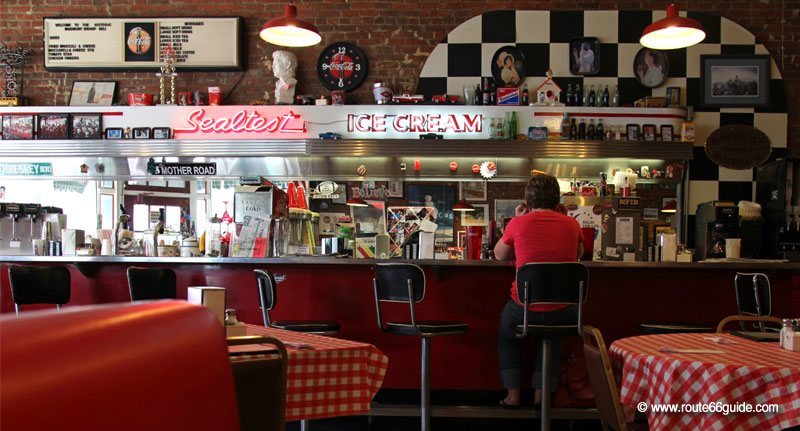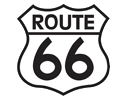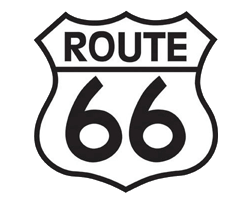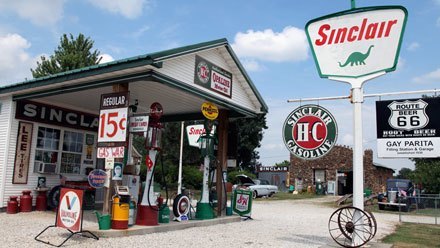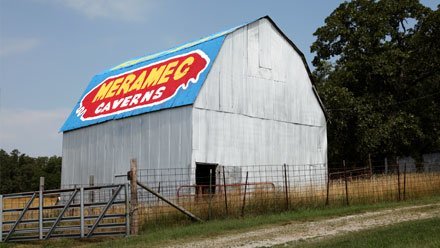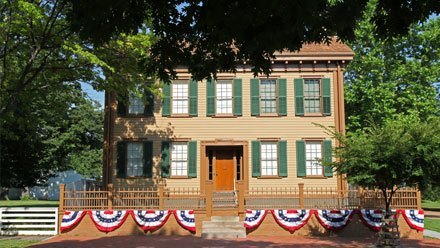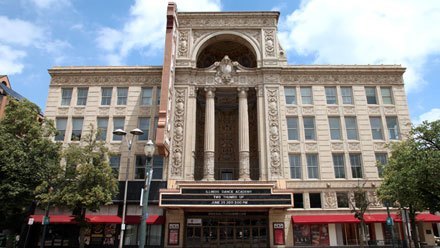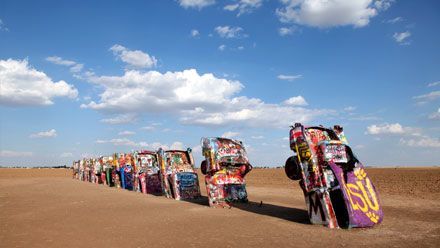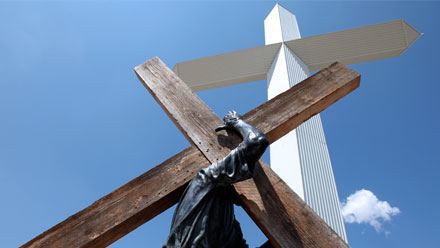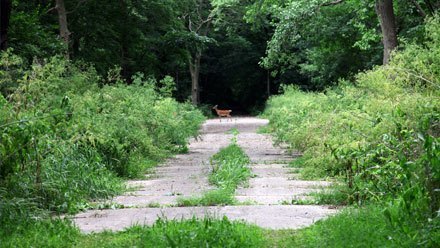Historic Route 66 in Missouri
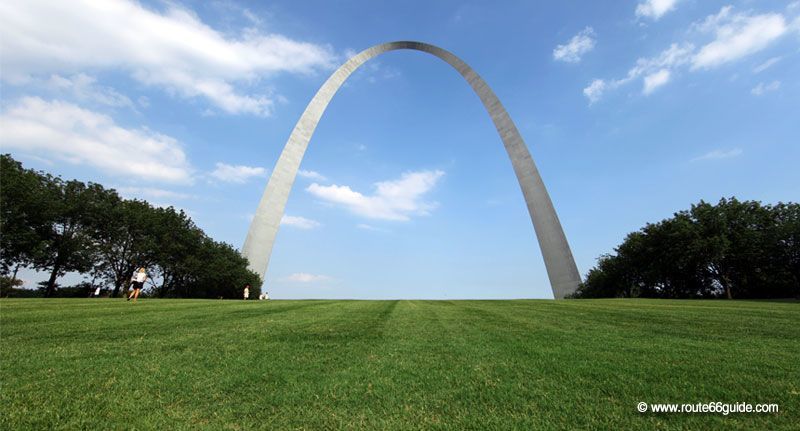
In Missouri, the open-air museum continues to exhibit its abandoned or restored constructions along Route 66. Please allow ample time for your stay: there are endless interesting things to see, visit, taste and discover here, along the historic route.
The visitor is greeted by one of the most emblematic buildings of the United States, the "Gateway Arch" or gateway to the western United States, in St. Louis, the main city of the state. The arch symbolizes a time when the city was indeed the last one before the long journey west. Before leaving, pioneers necessarily stopped to acquire any last minute items and prepare to fulfill their dreams of a better life, embarking on a challenging and not rarely disappointing journey.
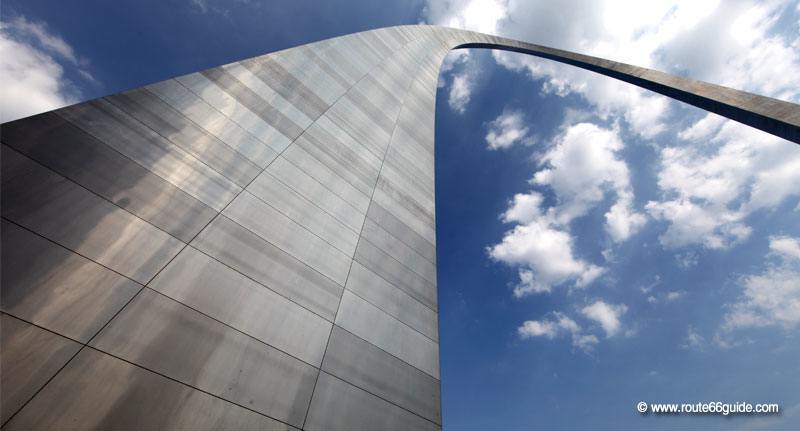
The fact is that, even today, as you leave Illinois, you enter another world. The more we penetrate this south of long mining past, the more rural and simple lifestyles become, the more conservative the attitudes. This region is known as the "Bible Belt". Needless to say, you don't mess with religion around here.
Missouri: main attractions along Route 66
The Gateway Arch in St. Louis; the sleek construction stands on the shores of Mississippi and symbolizes the gateway to the mythical American Midwest.

The Route 66 Museum is located in Eureka, on the site of the former "Times Beach" community, abandoned following the discovery of a massive dioxin soil contamination. The small museum of the state park department provides an overview of Route 66's layout in Missouri and its major attractions (photos, objects, clippings, etc.)
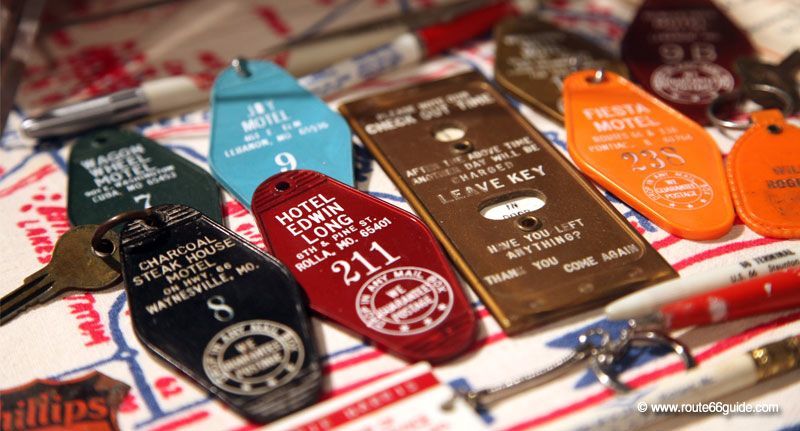
Ghost sign of Diamonds Restaurant; disproportionate, it still stands at the center of a vast parking lot in Villa Ridge. The property, now abandoned, was once the largest road restaurant in the world.
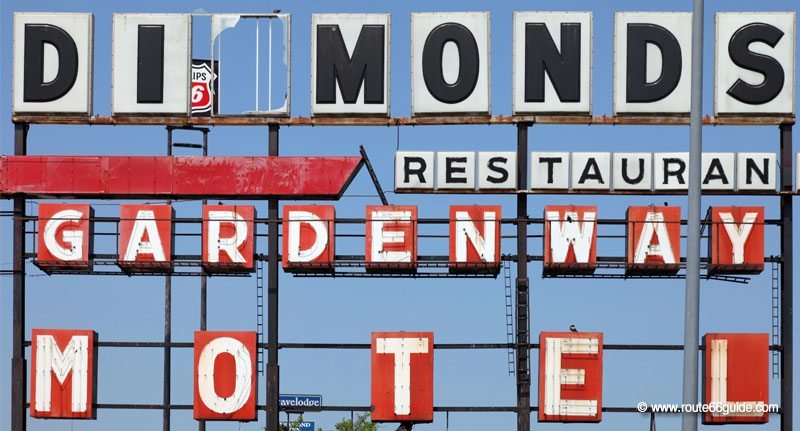
Twin water towers of St.Clair; essentially a practical joke of the municipality which, instead of erecting a single water tower as everyone else, chose to build two and label them "hot" and "cold", an hilarious -and ridiculous- idea.

Meramec Caverns near Stanton. In the heyday of Route 66, they were a major attraction along the route. Cars parked directly inside - a welcome relief for overheated engines - and a full-blown dance floor was even installed!
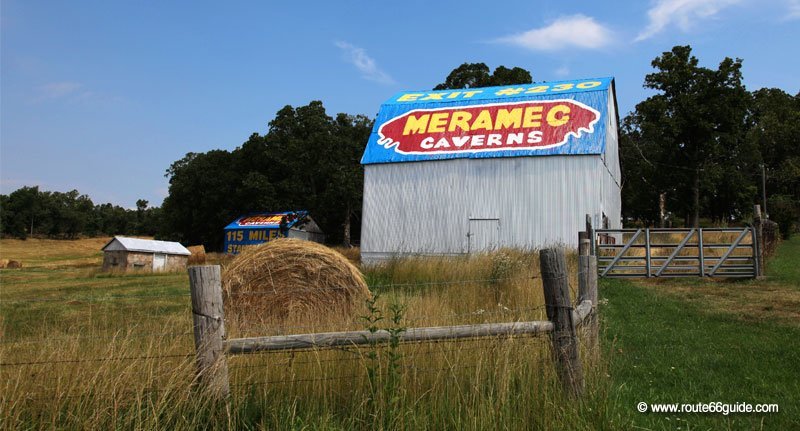
The Wagon Wheel Motel in Cuba was a famous tourist court or motor short in the heyday of the 66. Purchased and completely renovated by a resident of the city, the motel sprawls, today as yesterday, its pretty cabins in the heart of the large garden, behind what used to be a gas station and garage. Tourist courts on Route 66 offered a series of comprehensive services to motorists including repair services, gas stations, often restaurants and, invariably, a motel arranged around the parking lot.
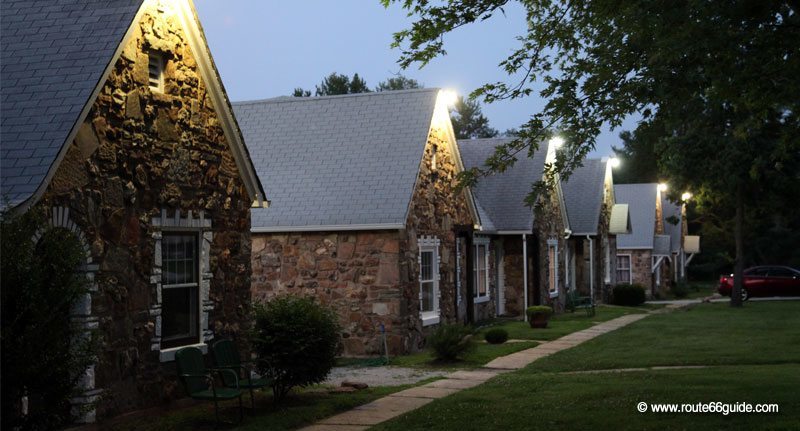
The Hooker Cut between Rolla and Waynesville is a fault over 90 ft. deep in the mountains which allowed the passage of Route 66 through these contrasting landscapes.
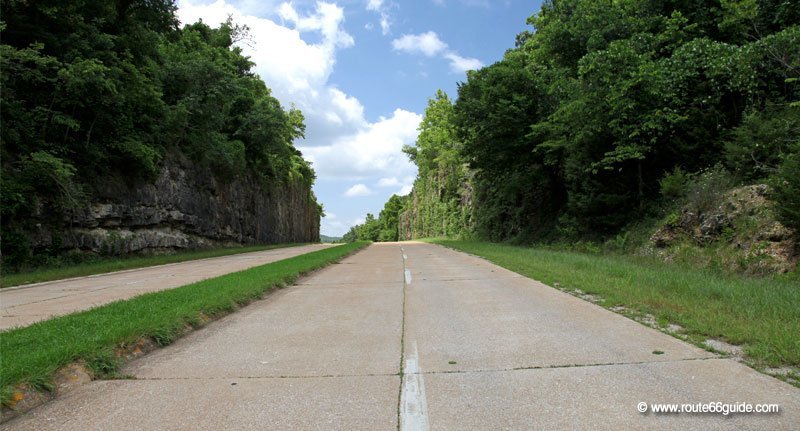
The Devil's Elbow Bridge is an abandoned metal bridge that, at the beginning of the century, caused numerous accidents - some of them fatal- with the onset of the morning mist.
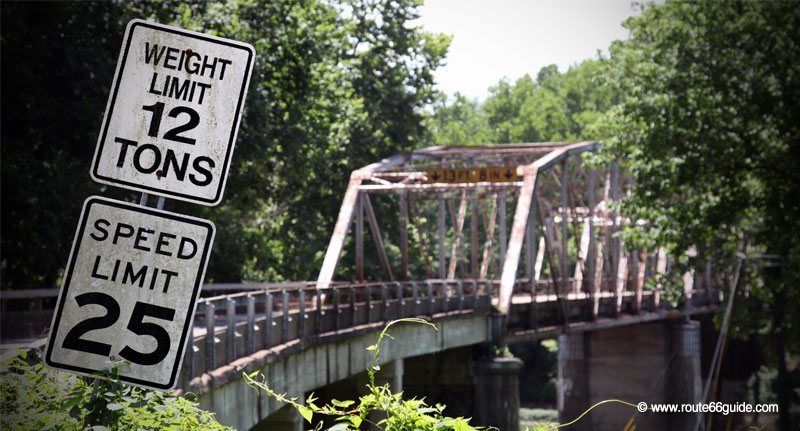
The Munger Moss Motel in Lebanon has been in service on Route 66 since 1946. Few institutions of that time survived decommissioning. Its huge panel on the edge of the road is one of the most legendary on Route 66.

The Shrine Mosque in Springfield was built in 1923 and is listed on the U.S. National Register of Historic Places since 1982.
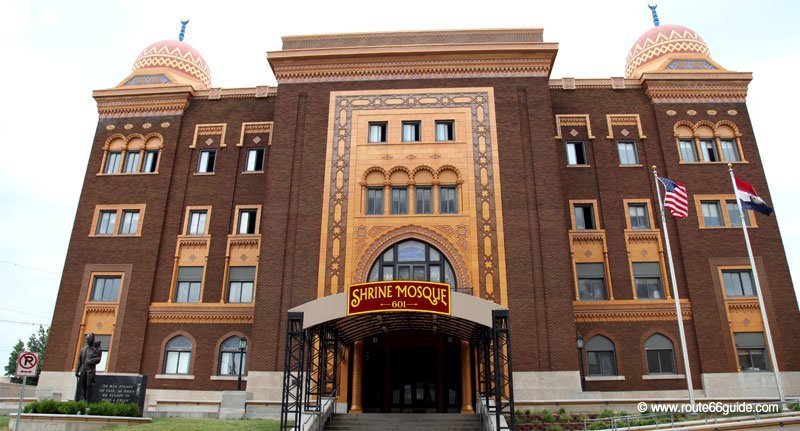
Red Oak 2, in the vicinity of Carthage, is a real-size reconstruction of the childhood town of artist Lowell Davis, an old crossroads town on Route 66 in the 1940s, which completely vanished following its decommissioning. Everything is there, including the old station, church, school, cemetery, restaurant, general store, and even prison! A crazy, excessive, expensive and constantly evolving project, to which the artist has devoted his entire fortune, stubbornly refusing to have visitors pay for access.
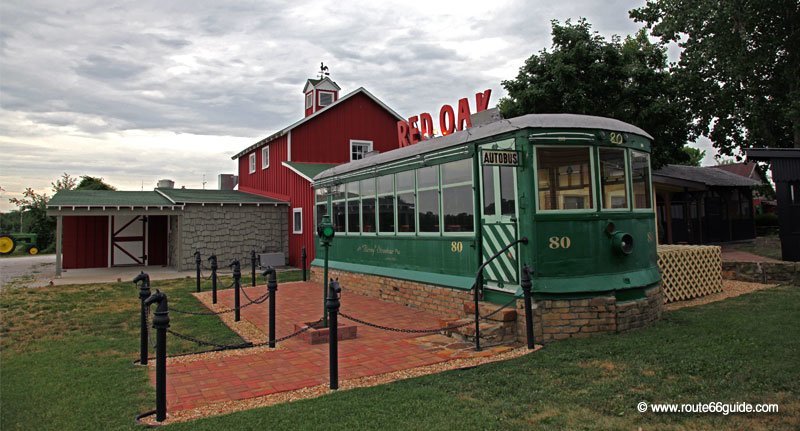
The Drive-In Theater in Carthage is arguably the most beautiful and best restored Drive-In movie theater on Route 66. Dating from 1940, it reopened in 1998 after being closed for 14 years. Projections on Friday, Saturday and Sunday nights only.
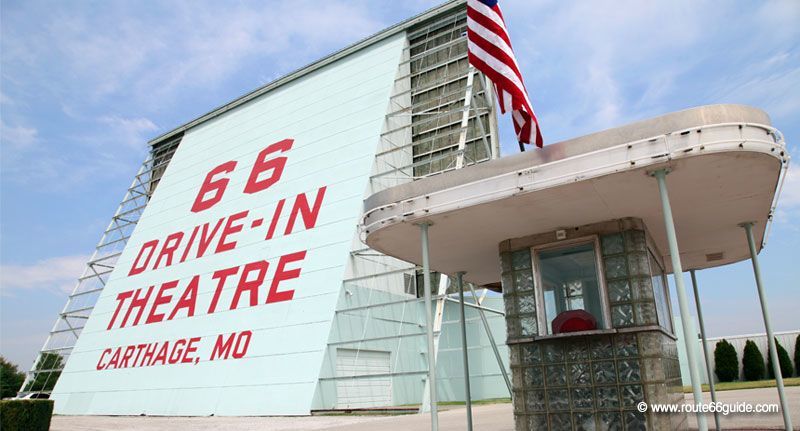
The Bradbury Bishop Deli and Route 66 Diner in Webb City was a soda fountain as hundreds others on Route 66. The specialty of these small family restaurants was mixing sodas - traditionally homemade - with balls of ice cream. Few survived the decommissioning of Route 66. It was however saved by a former client.
